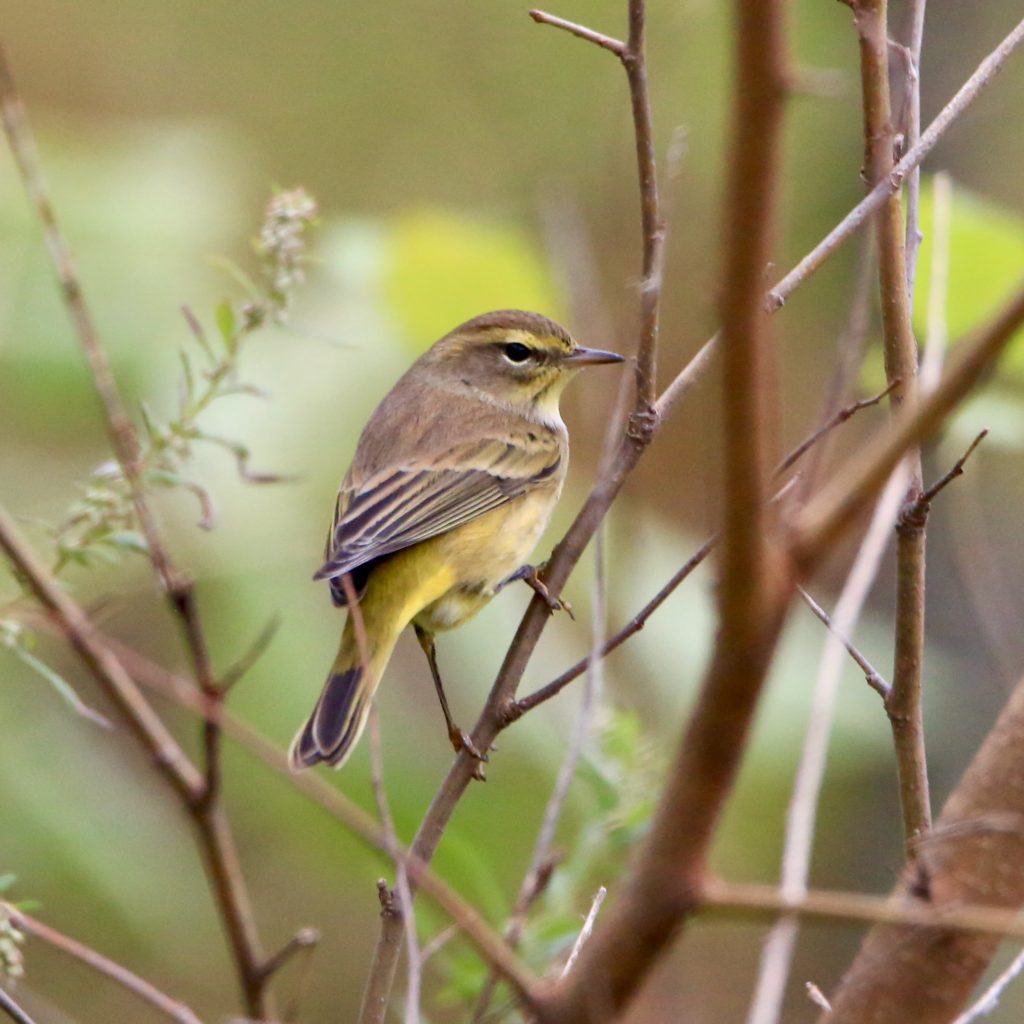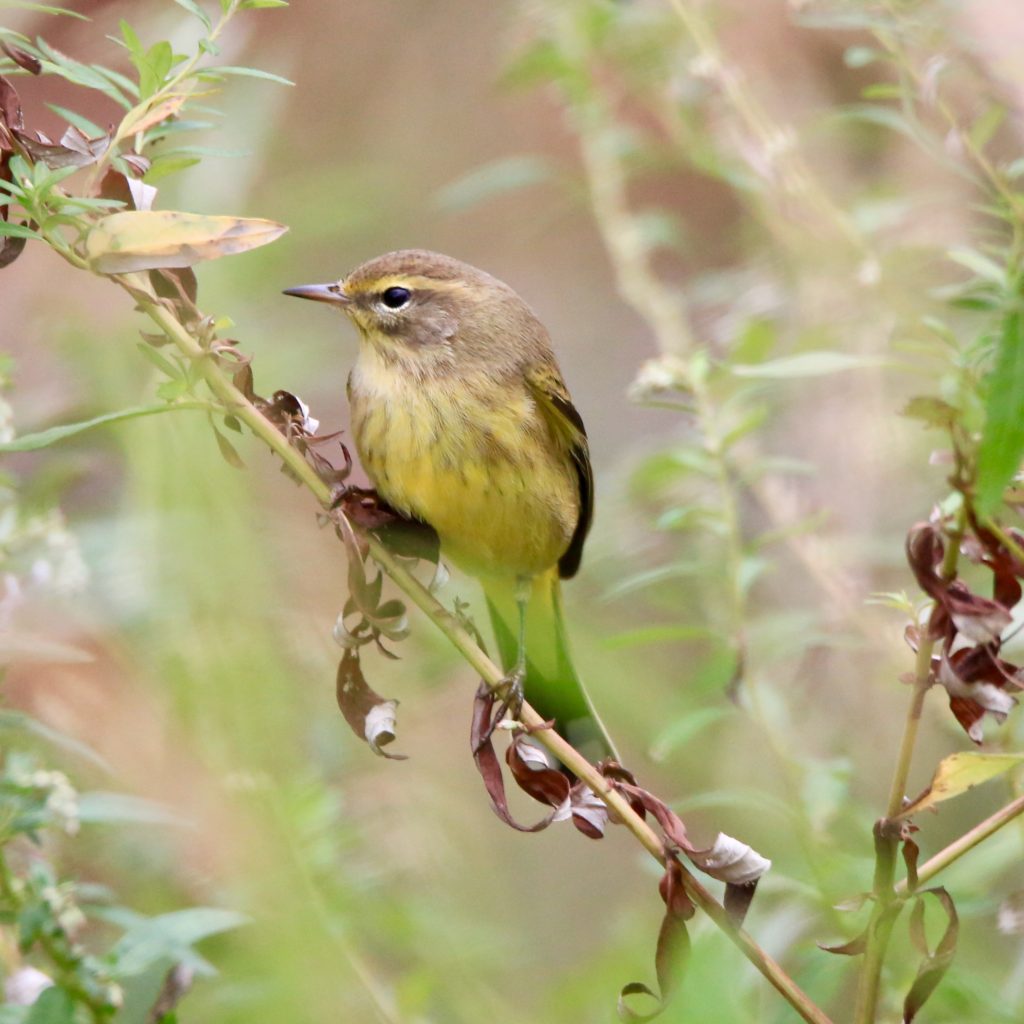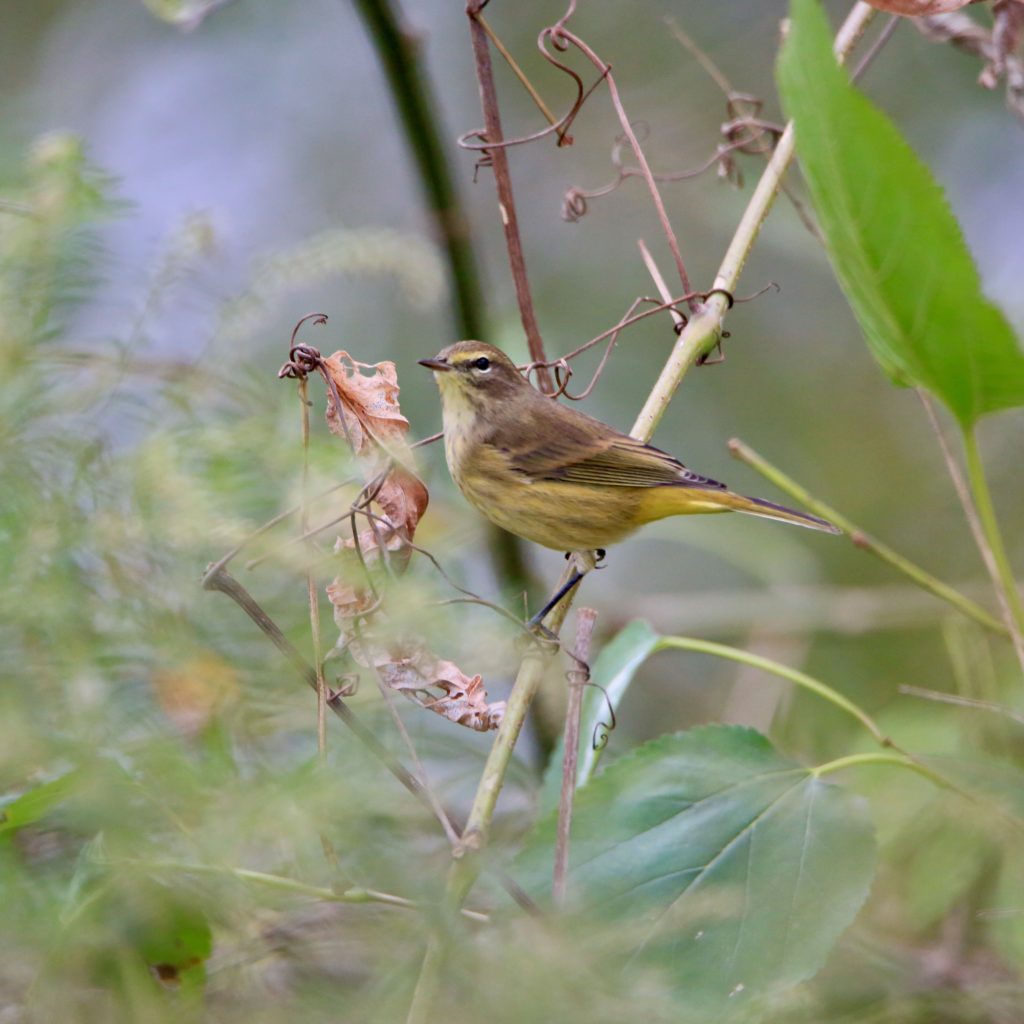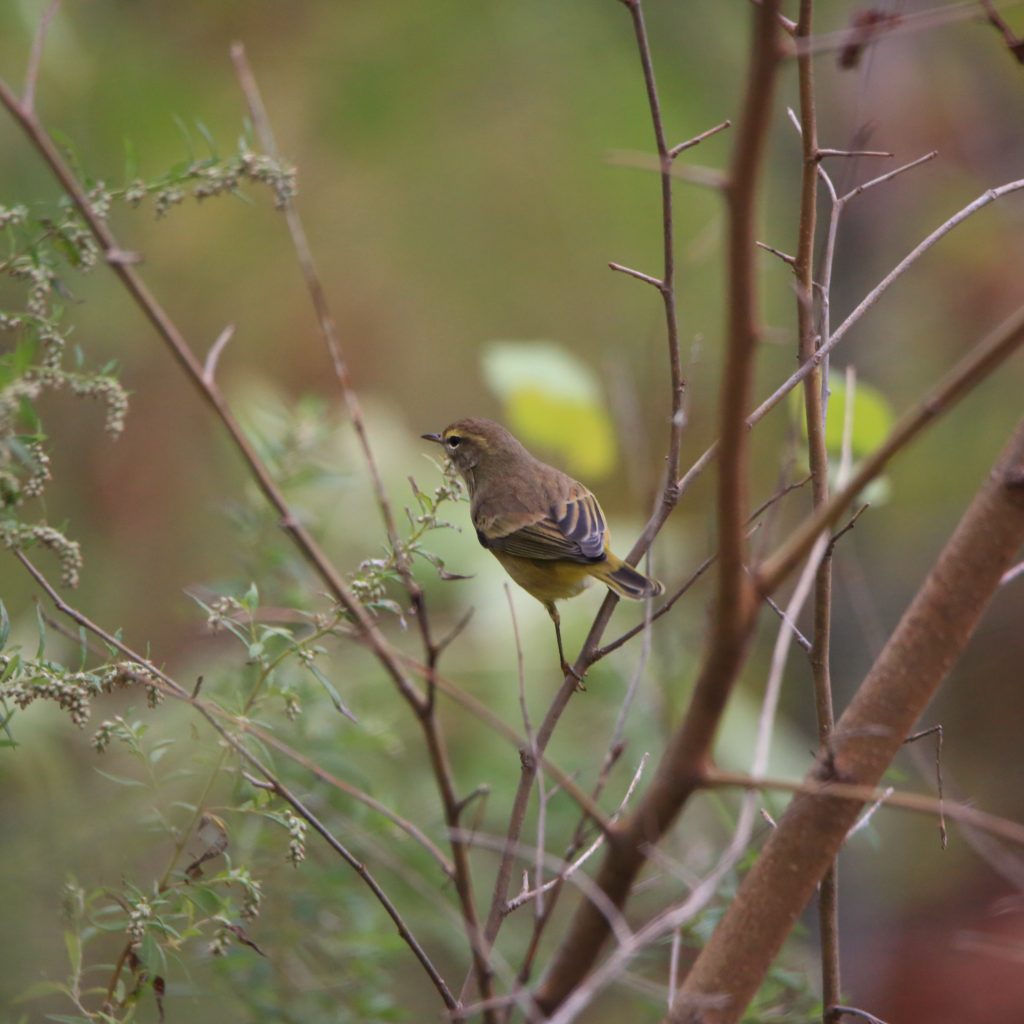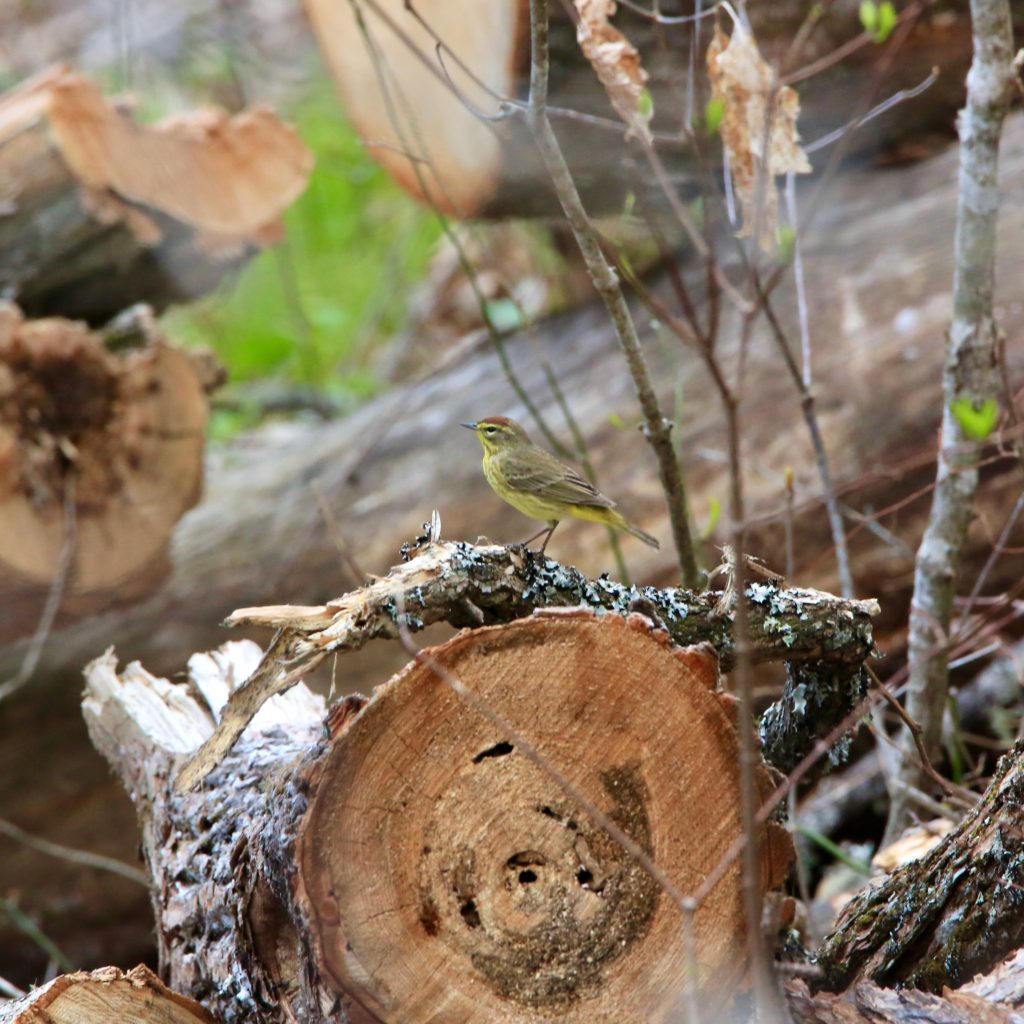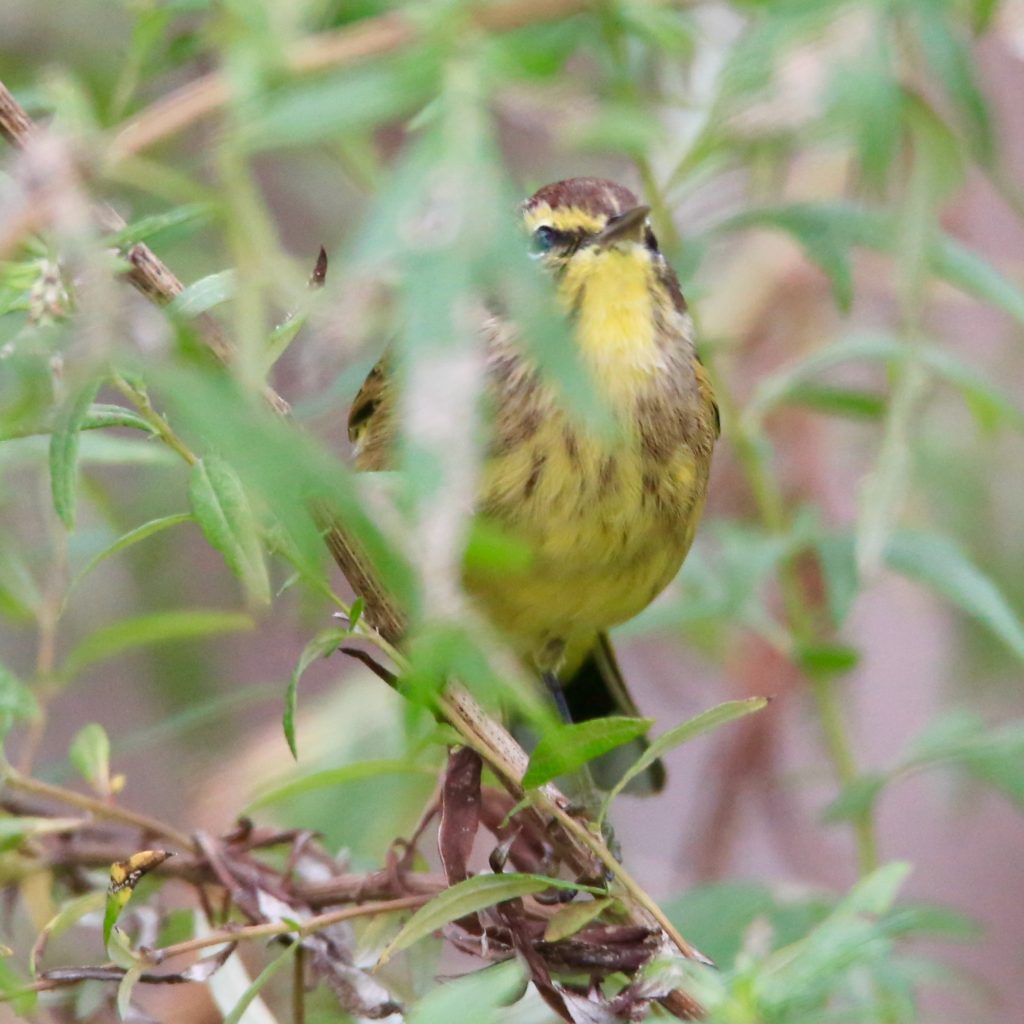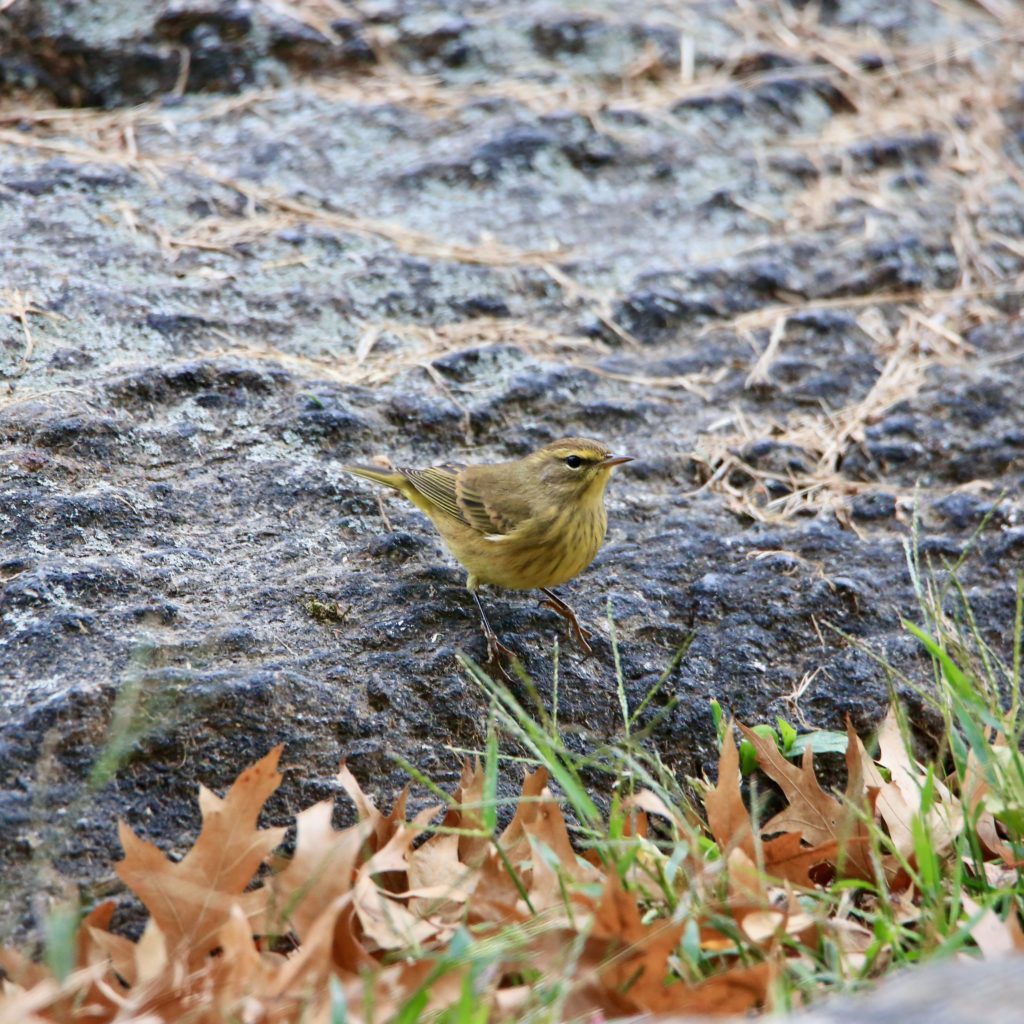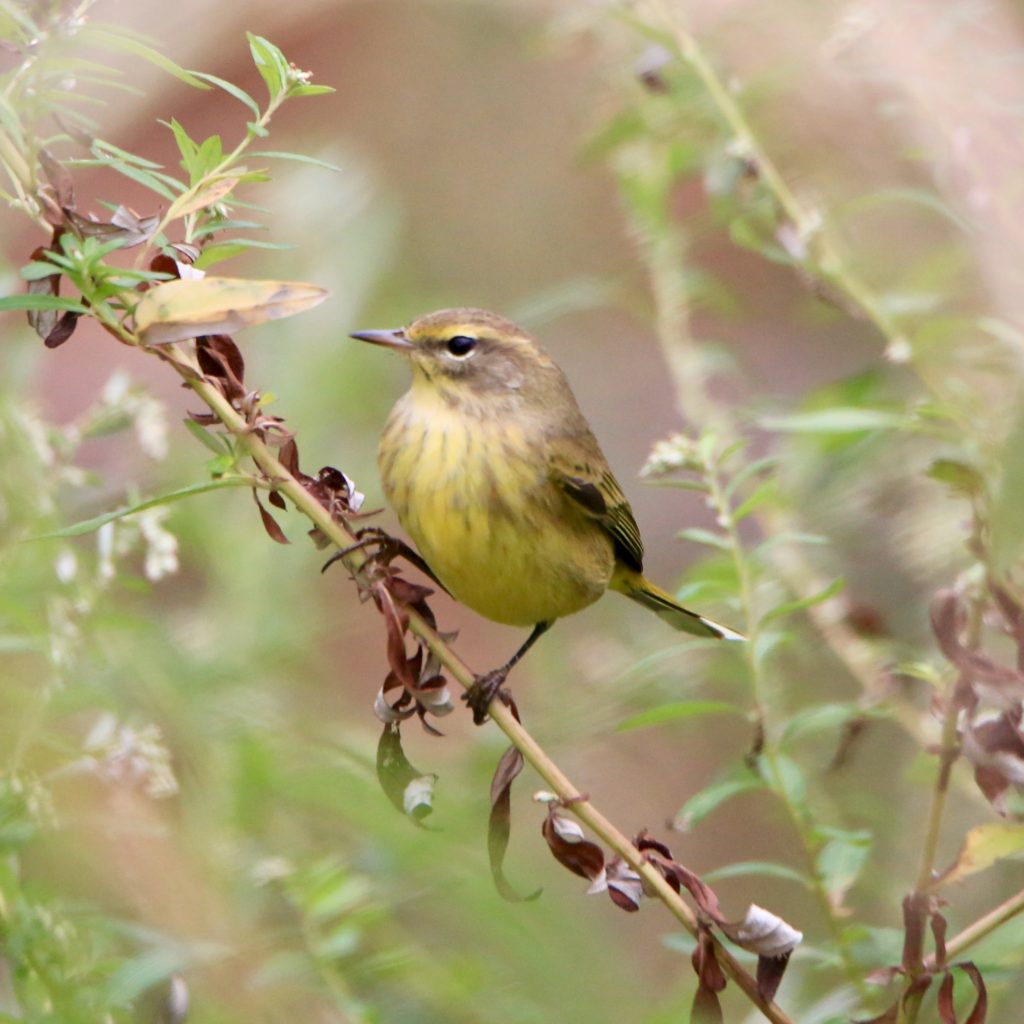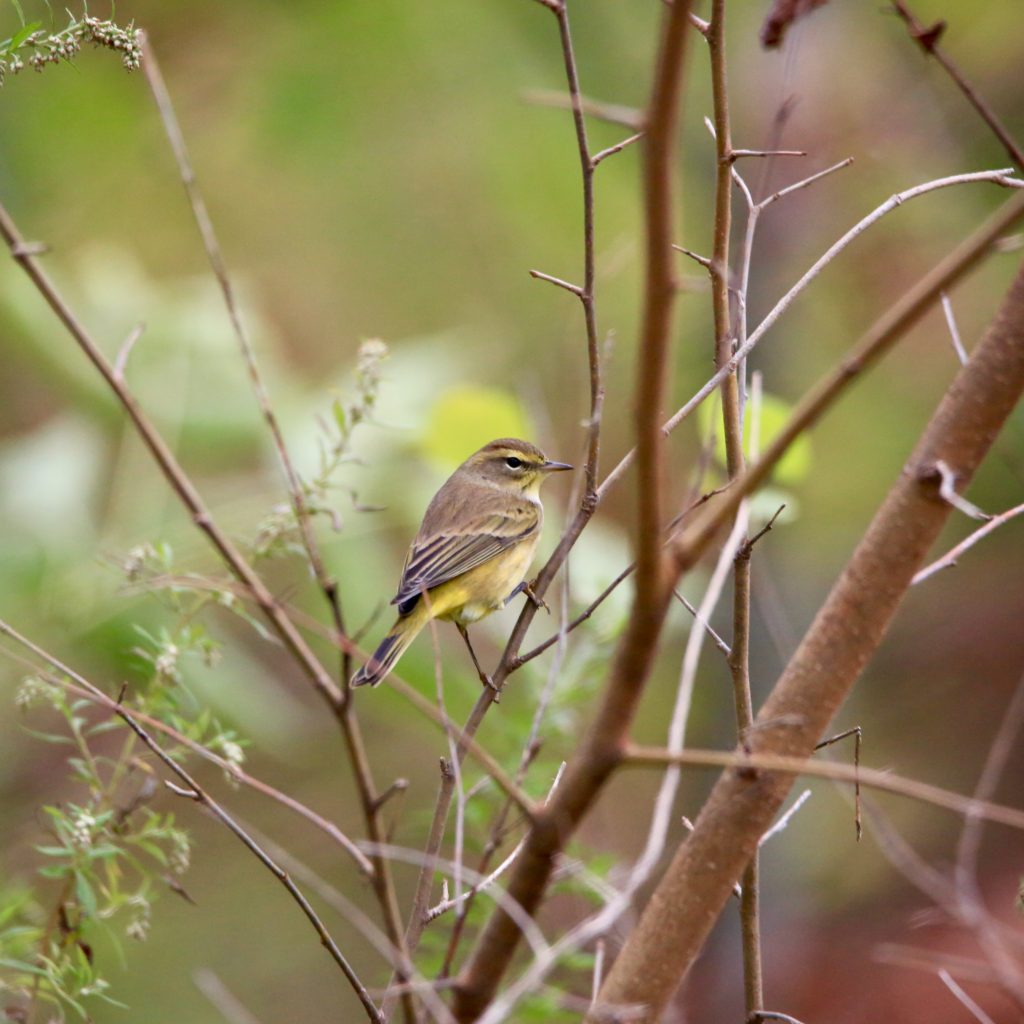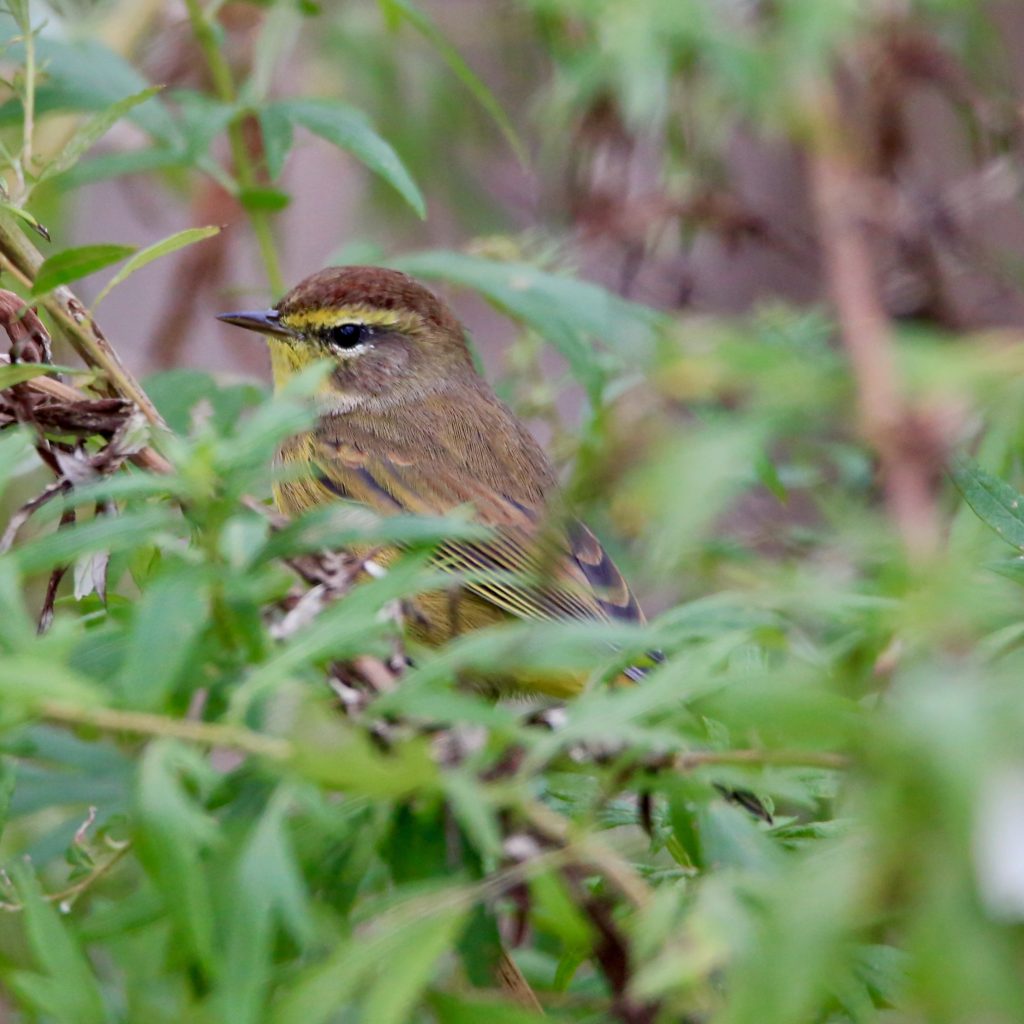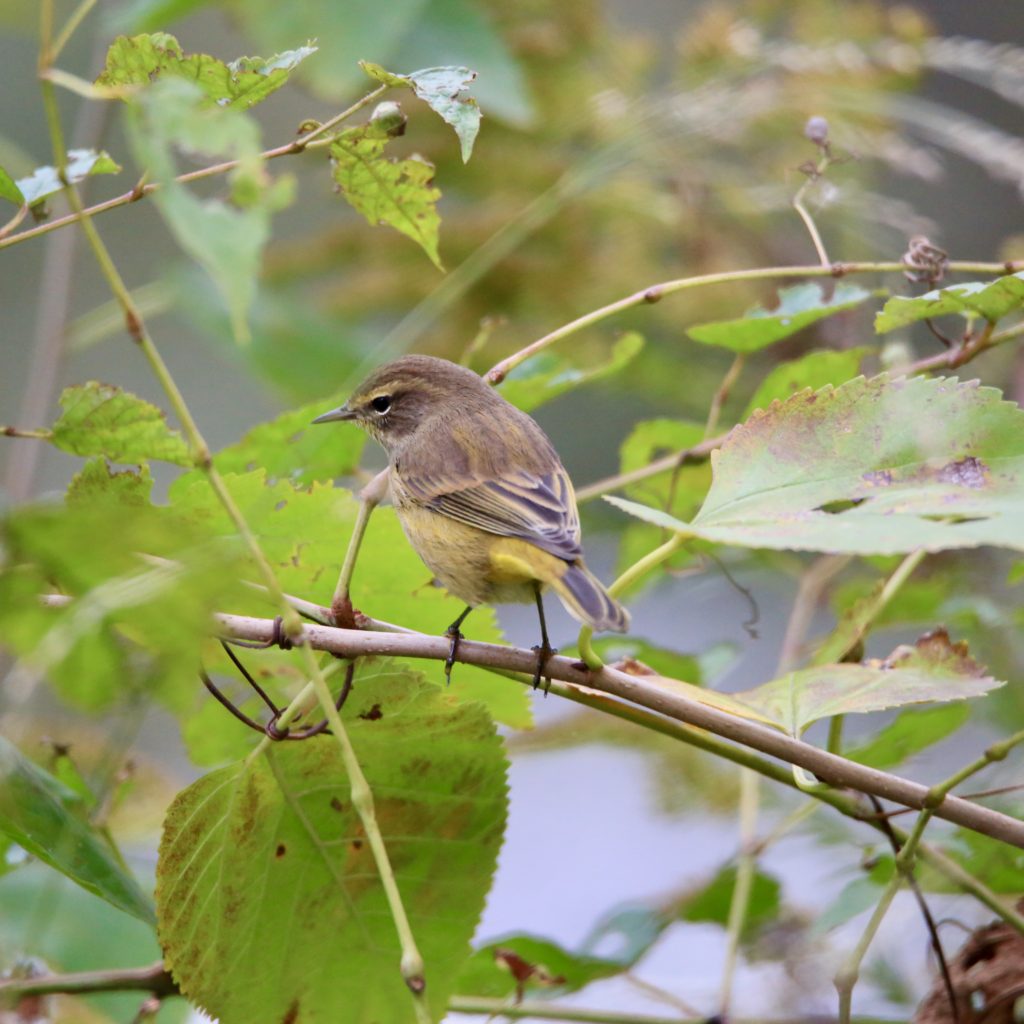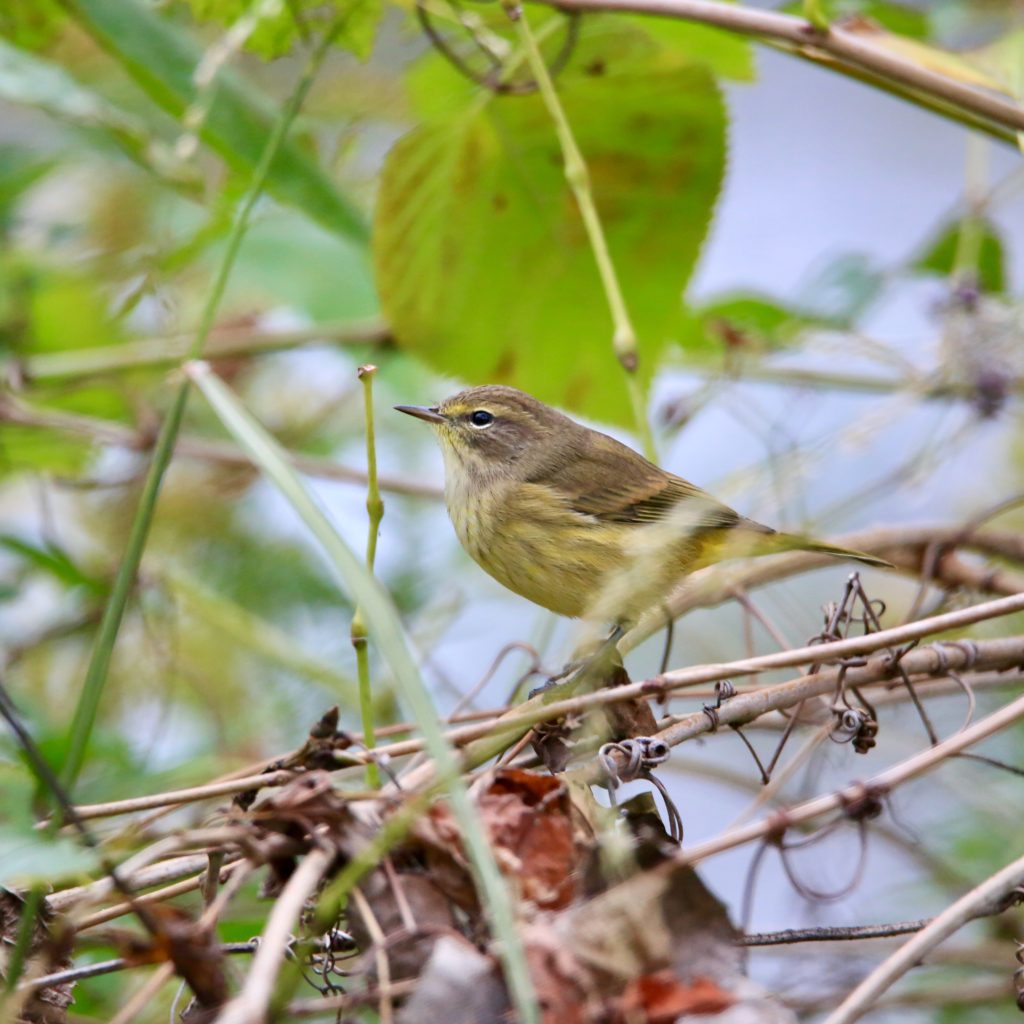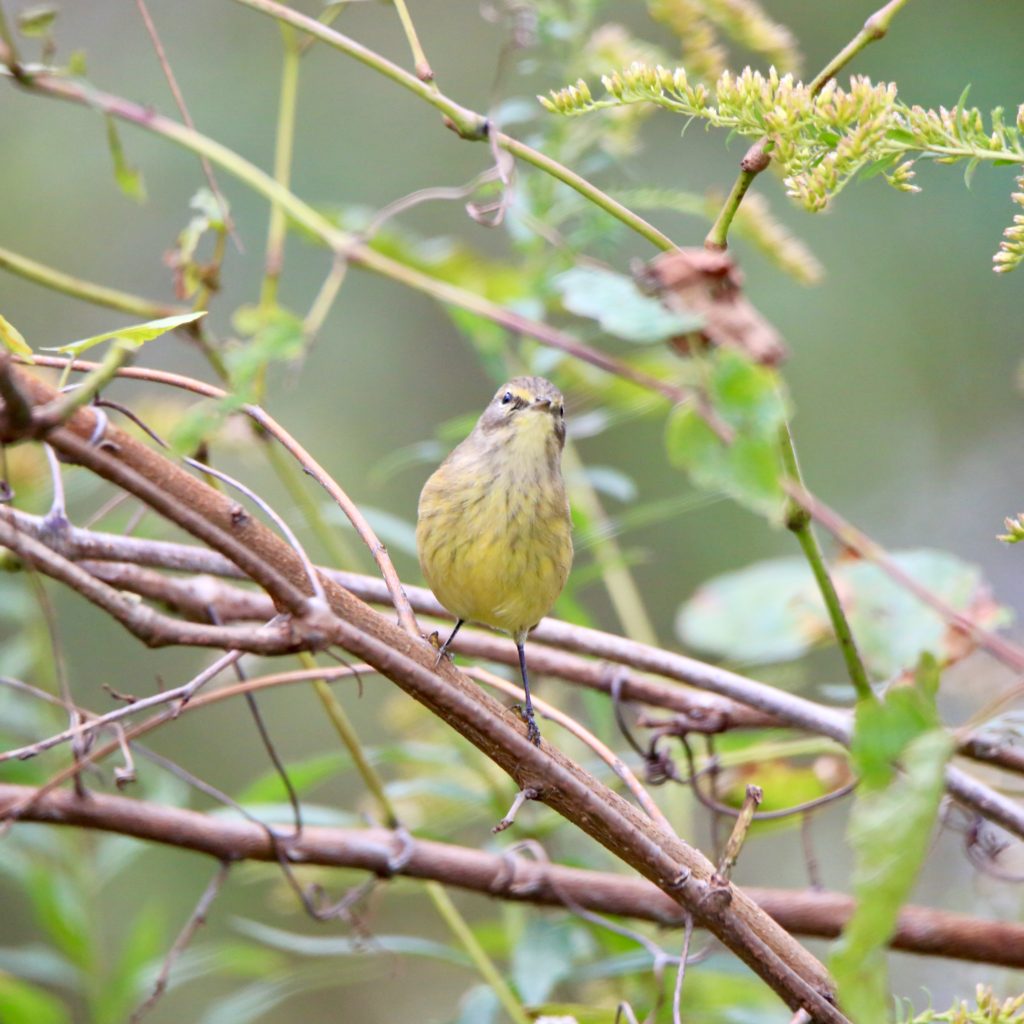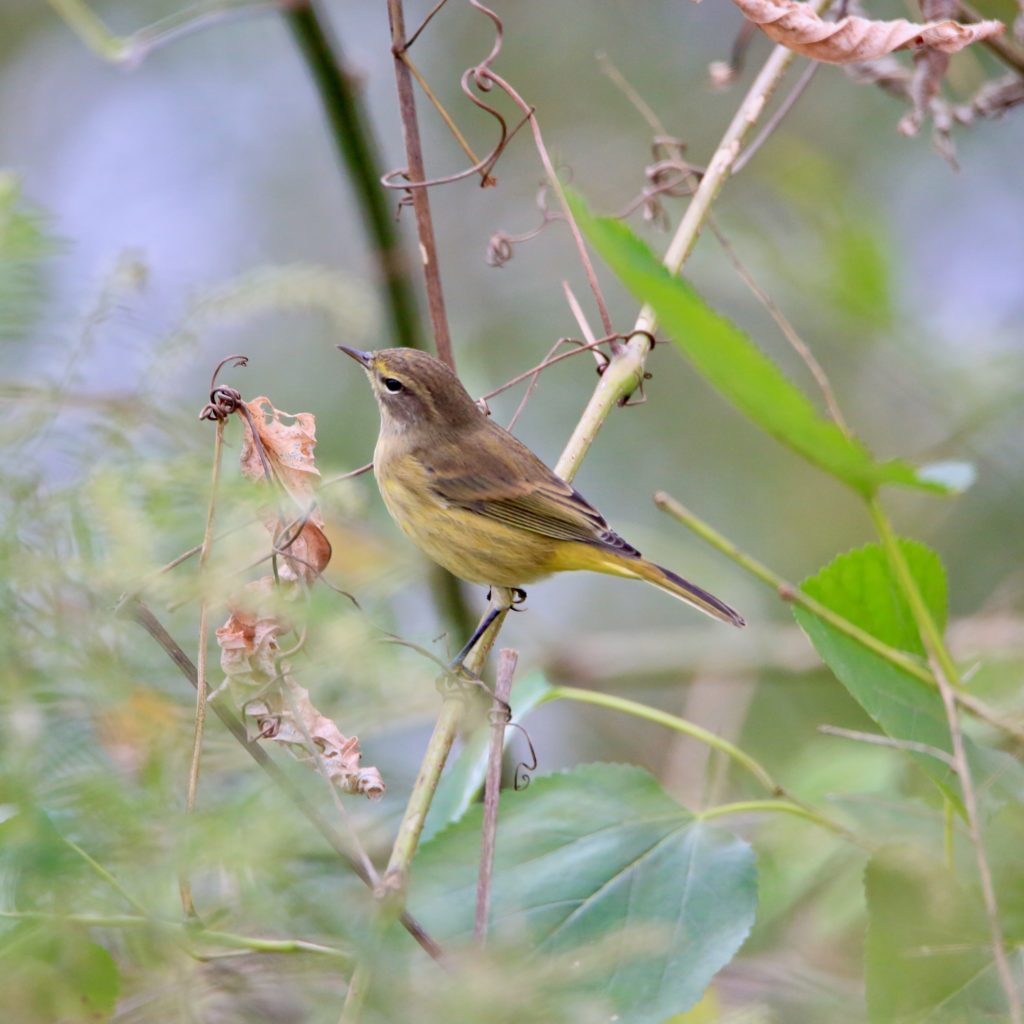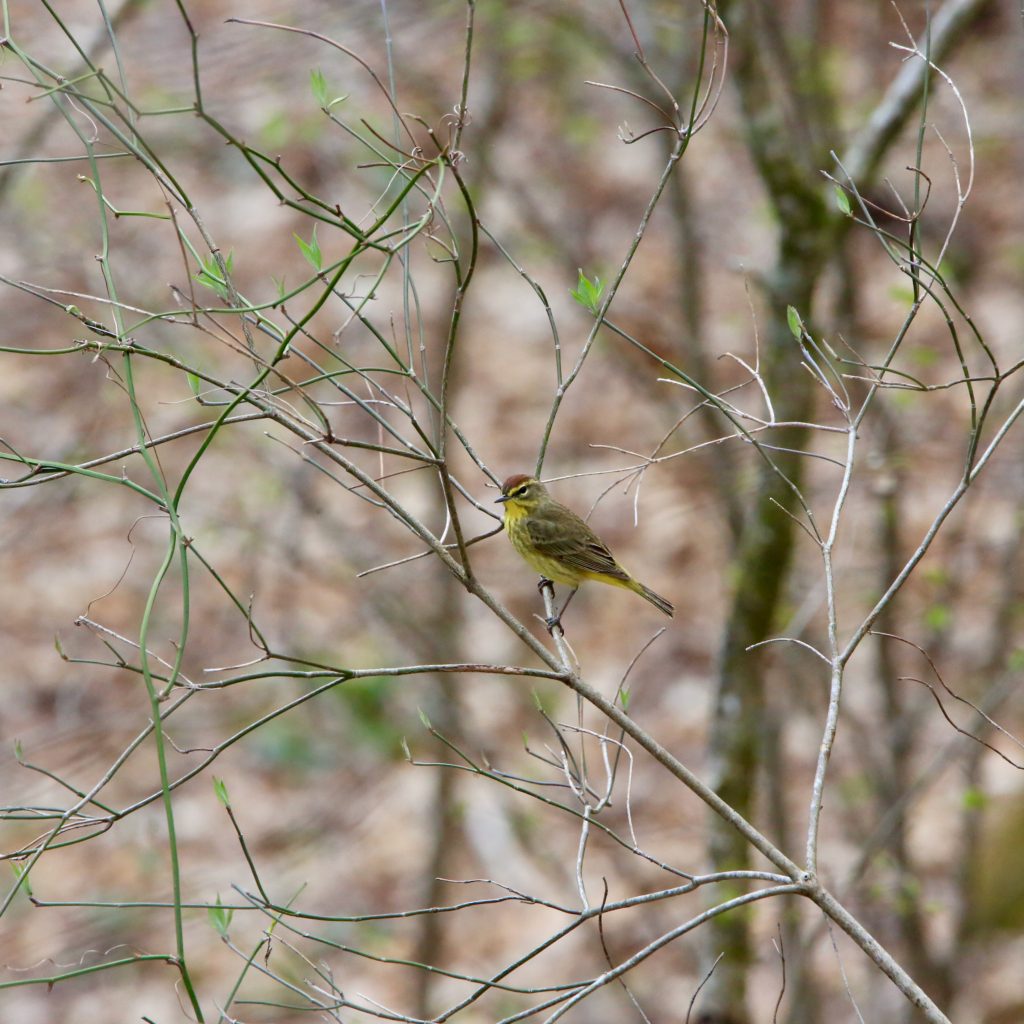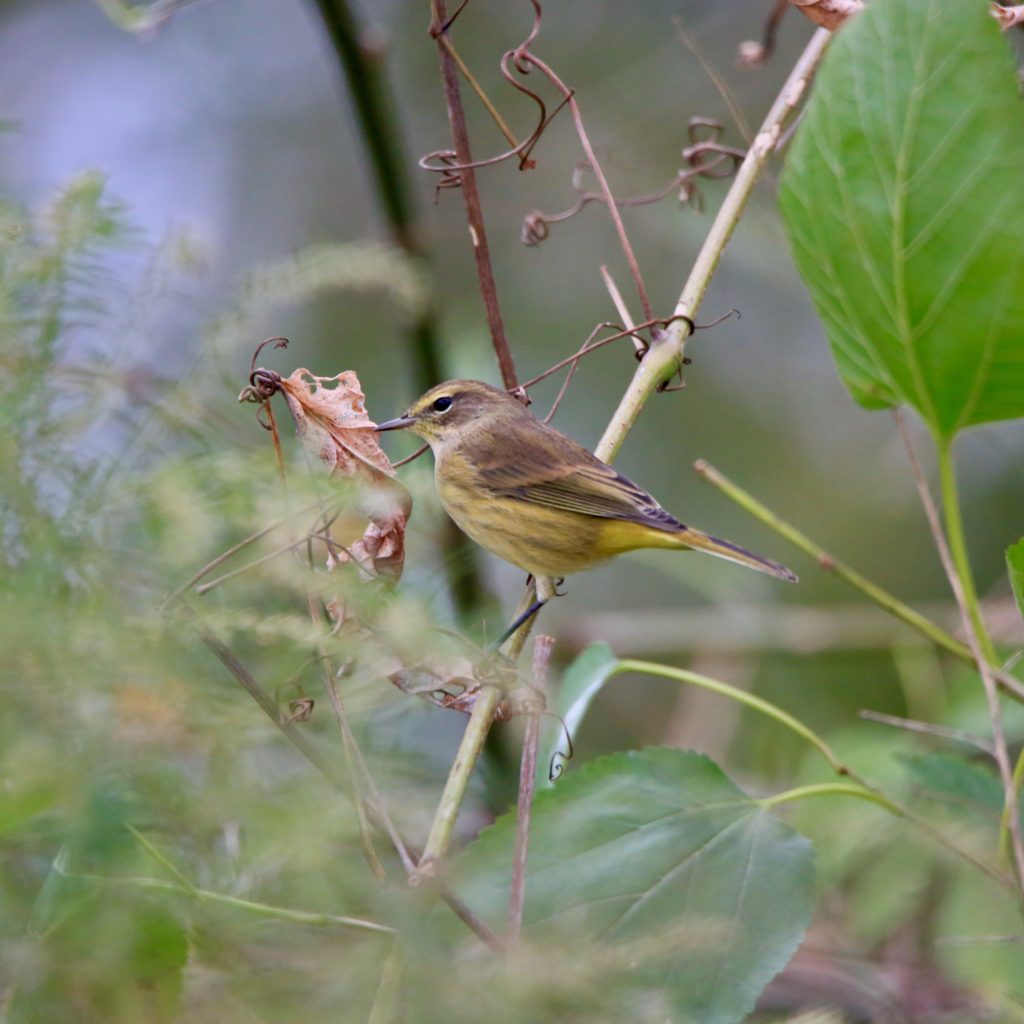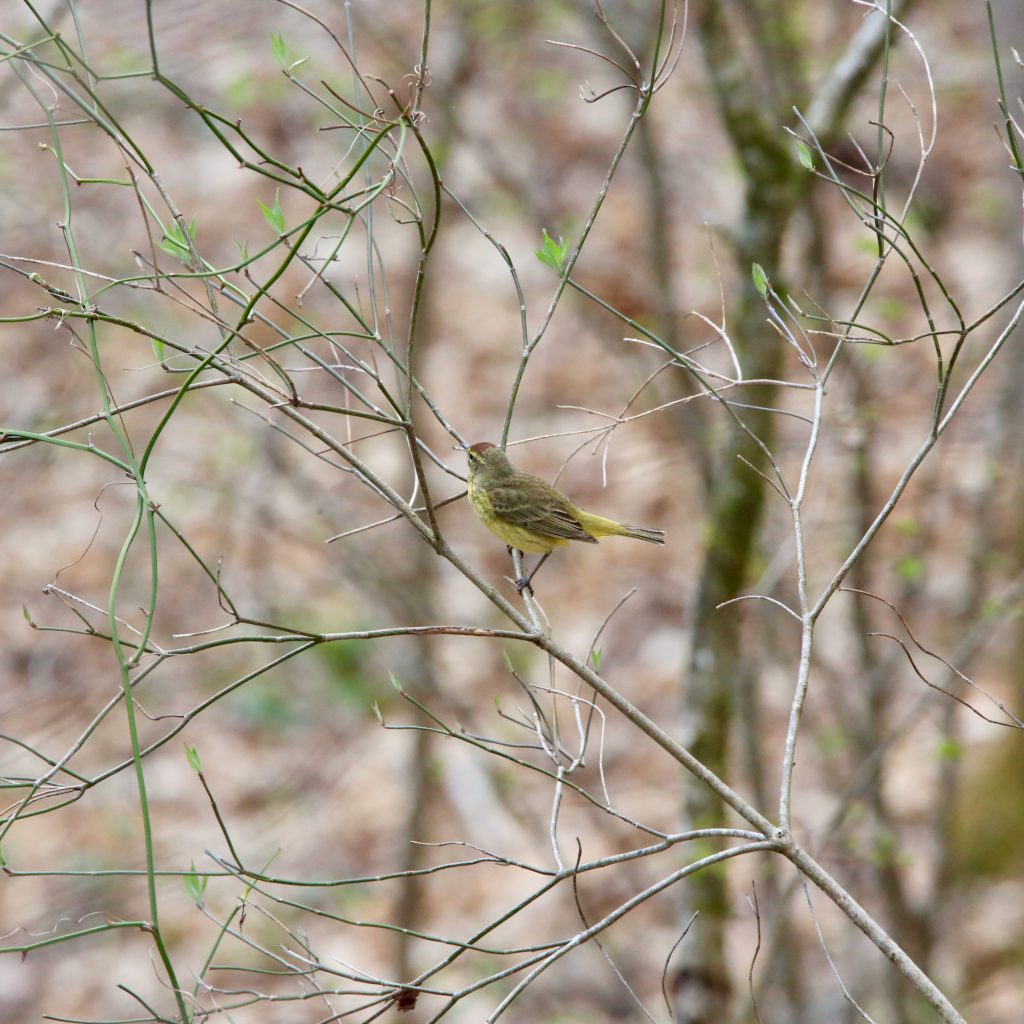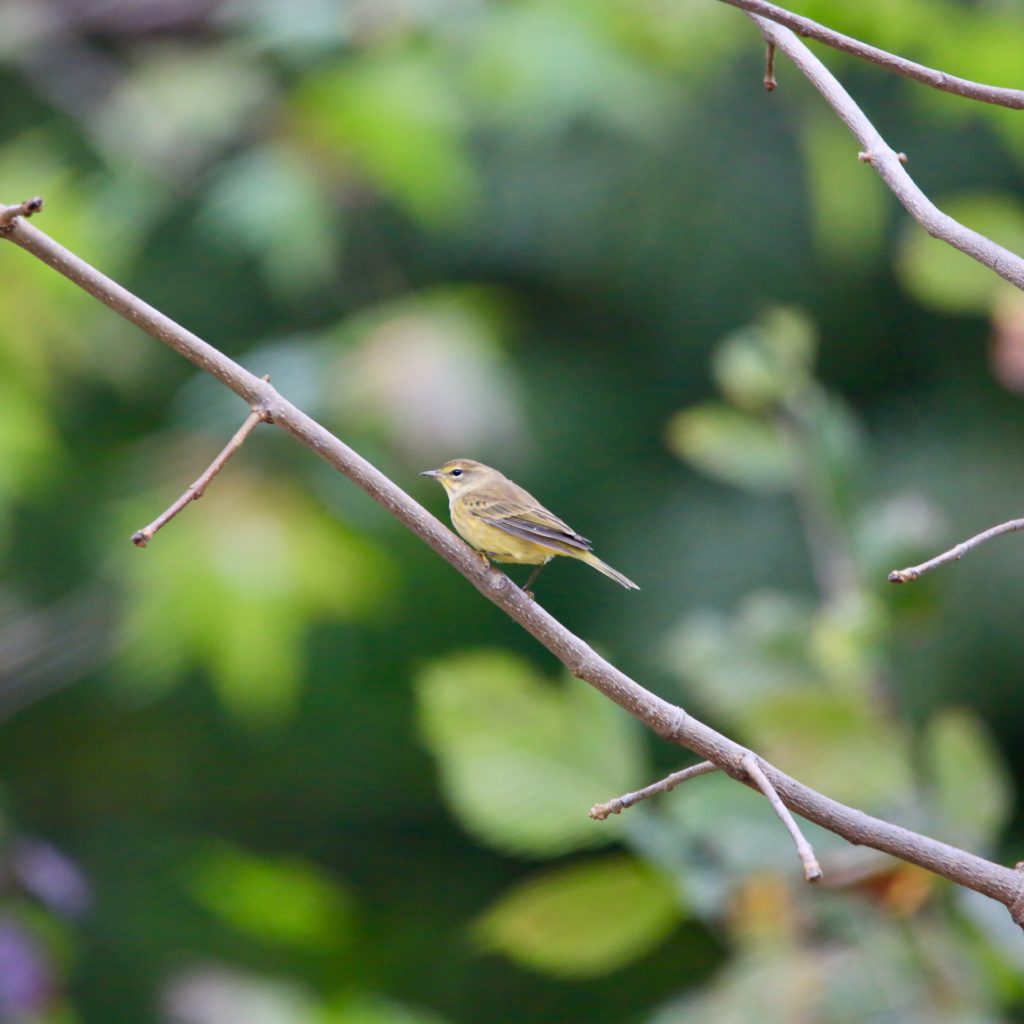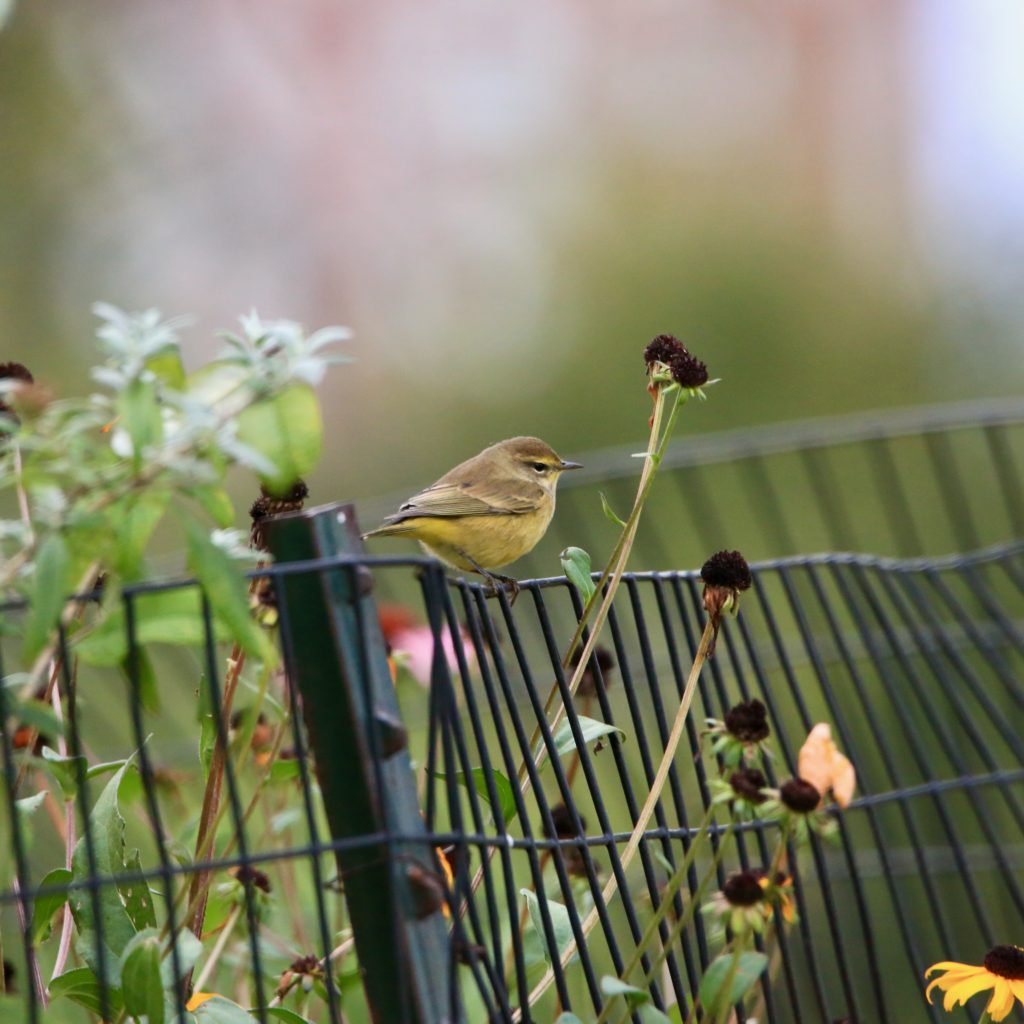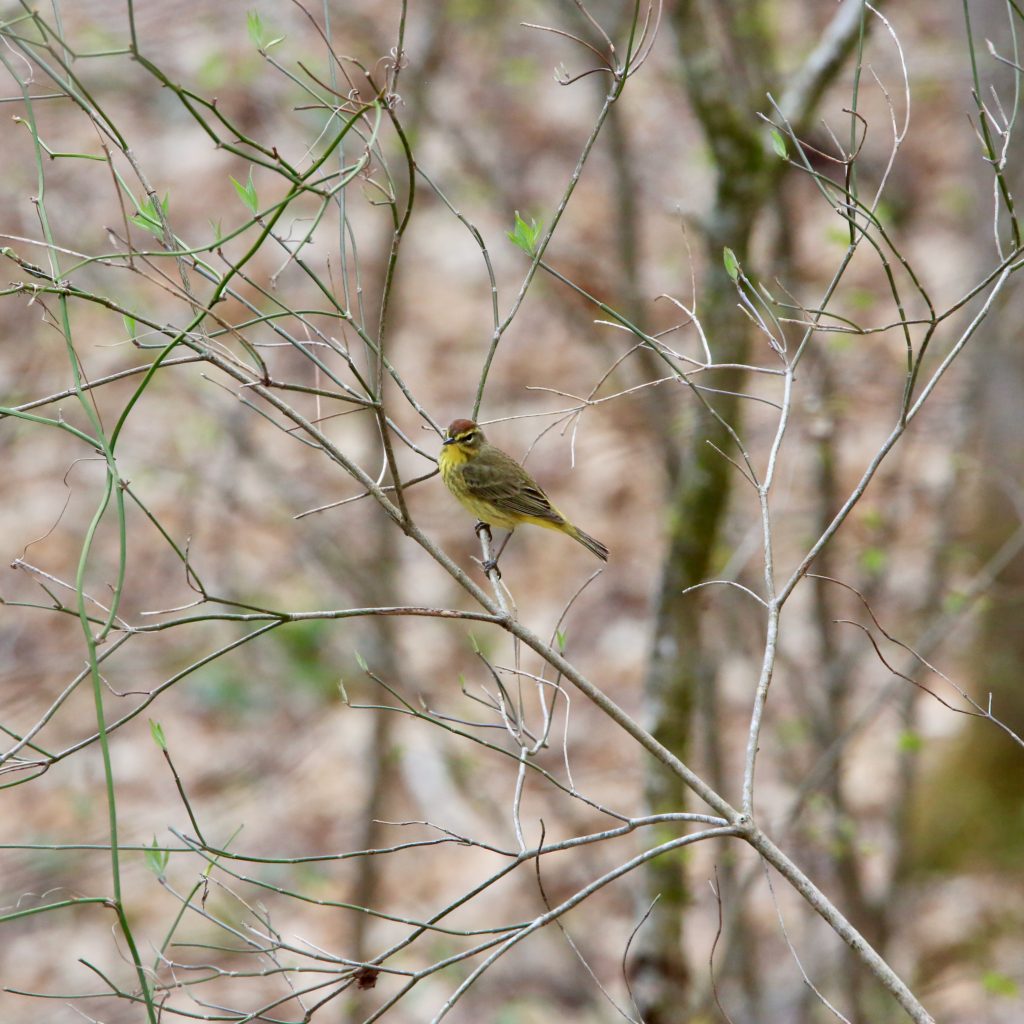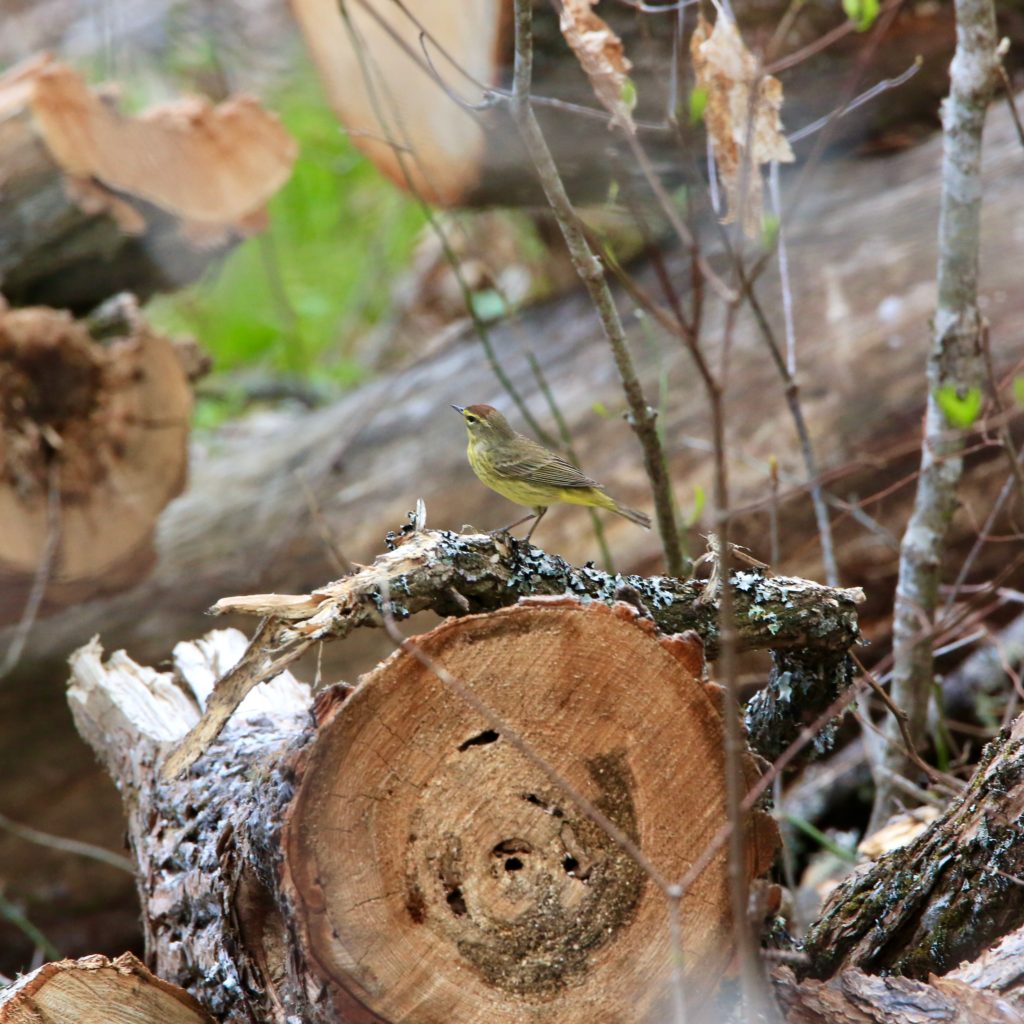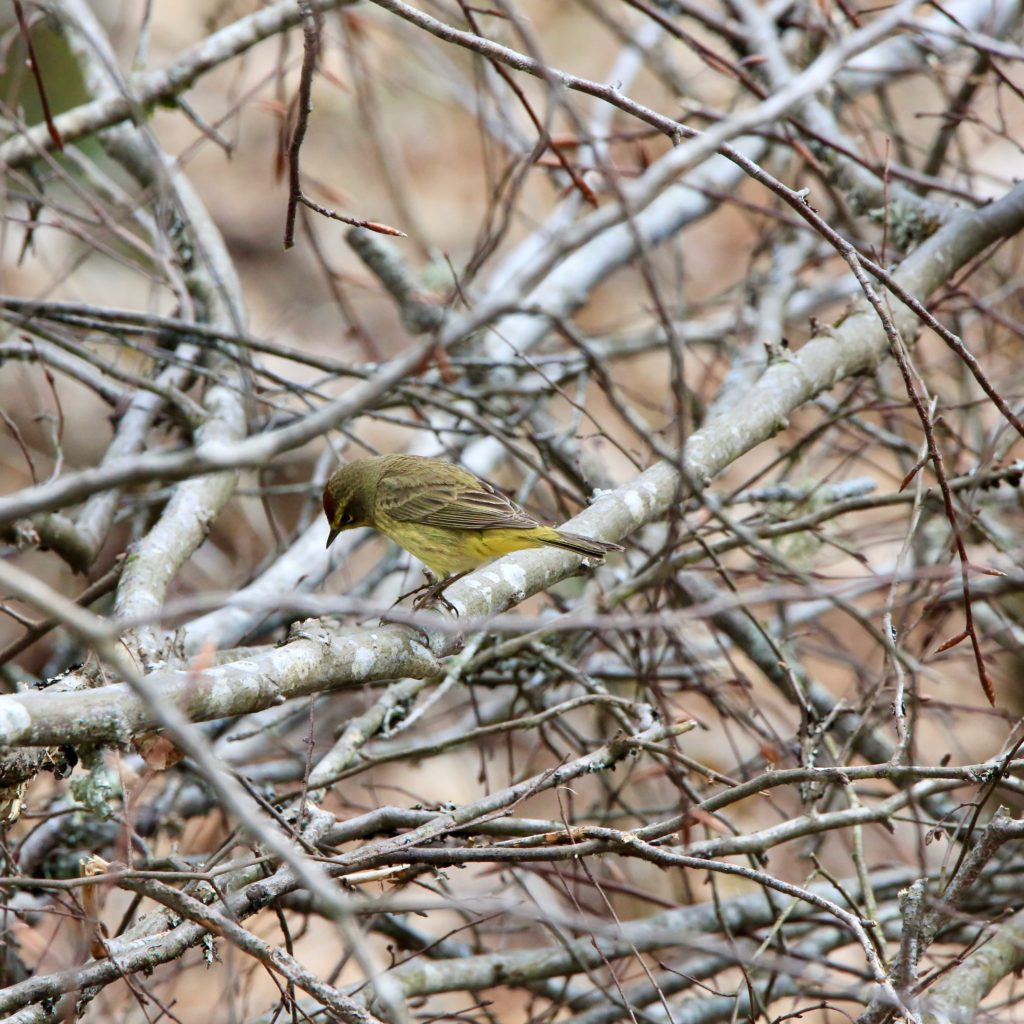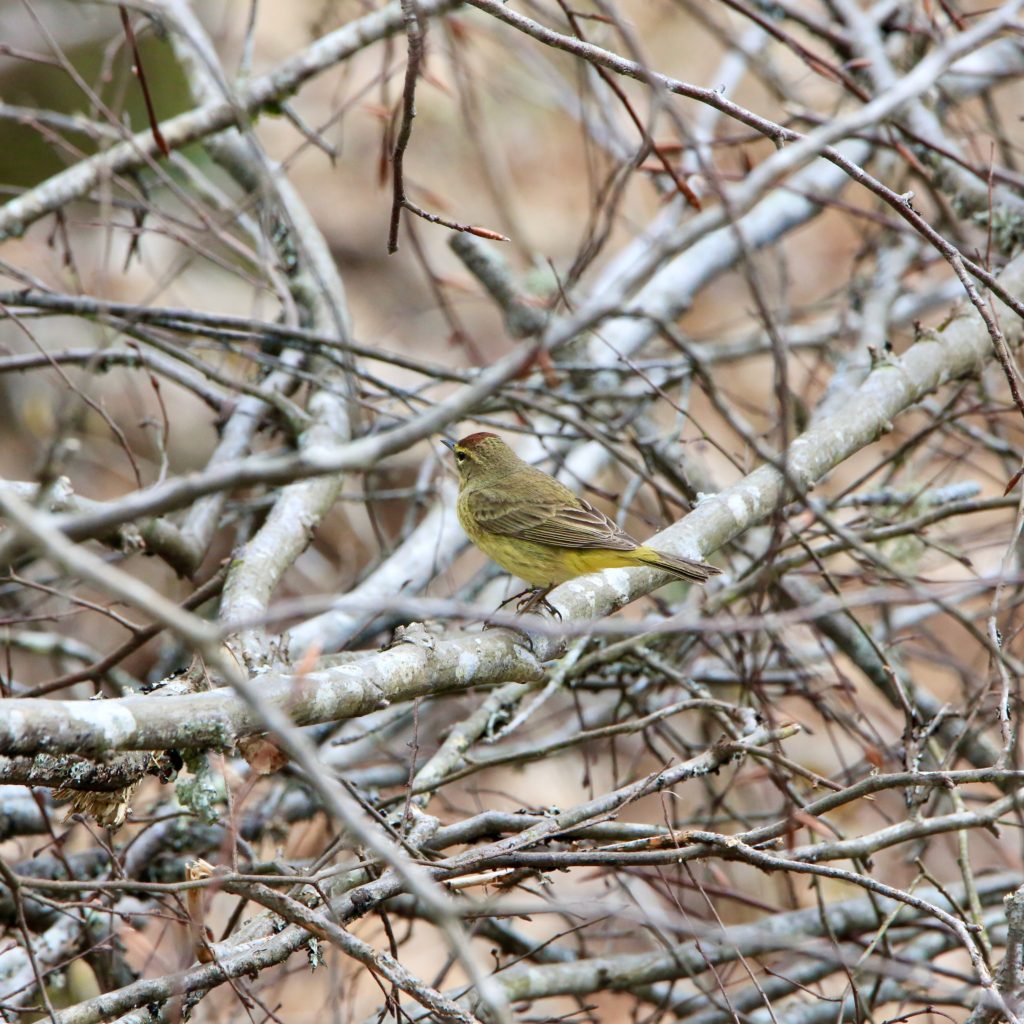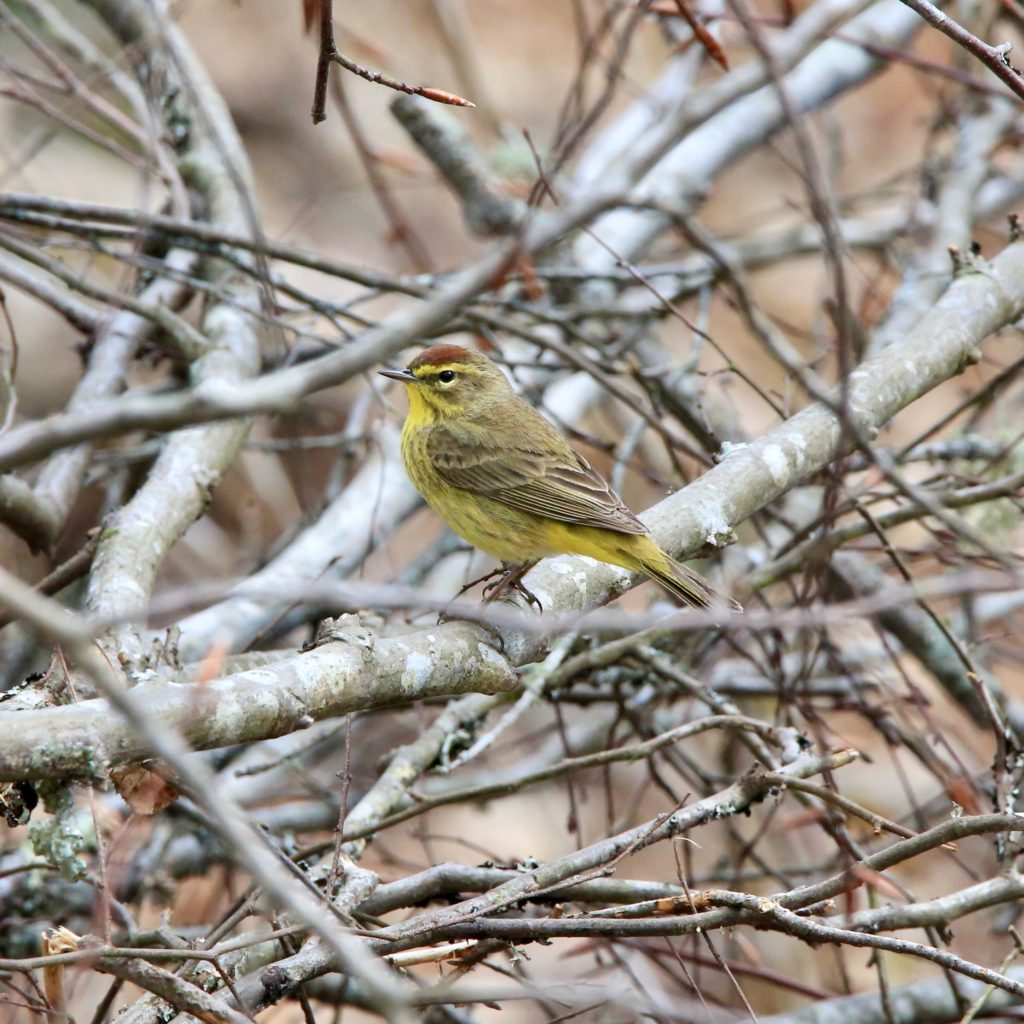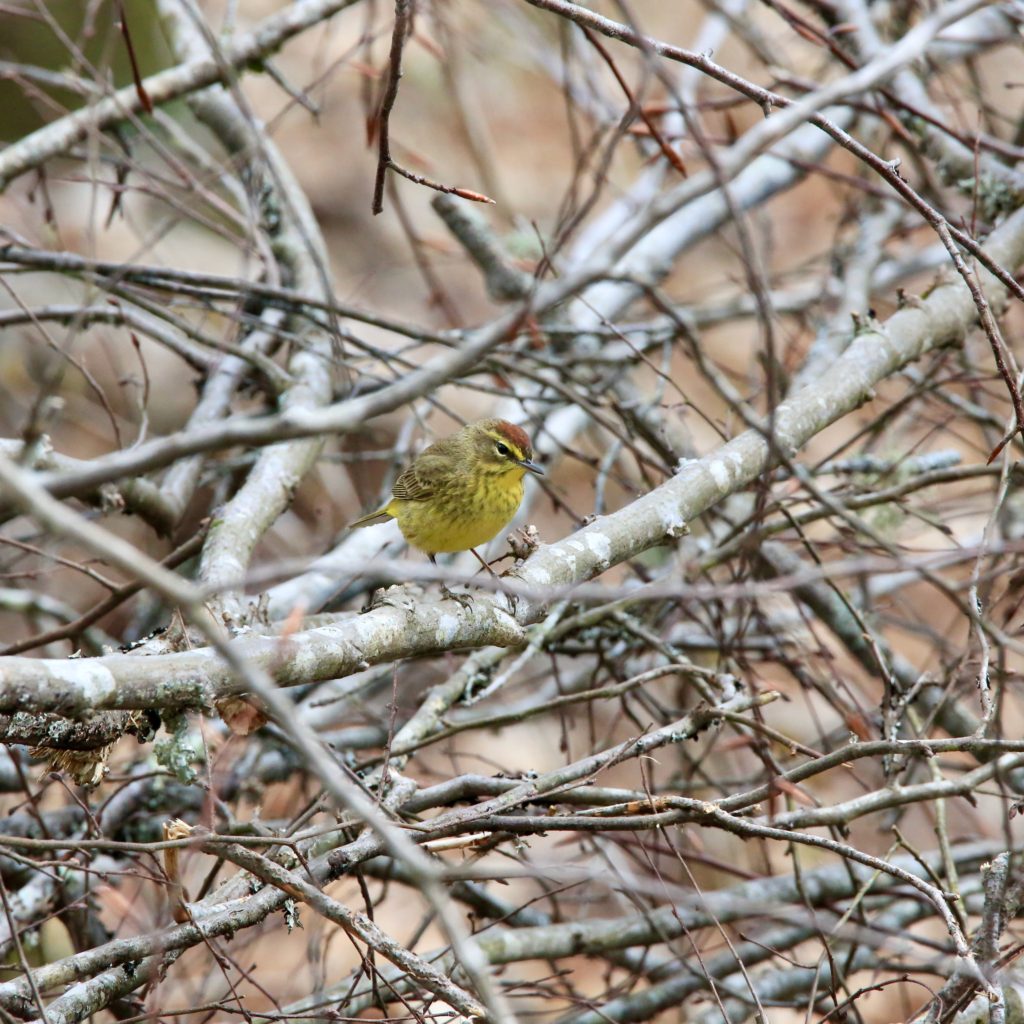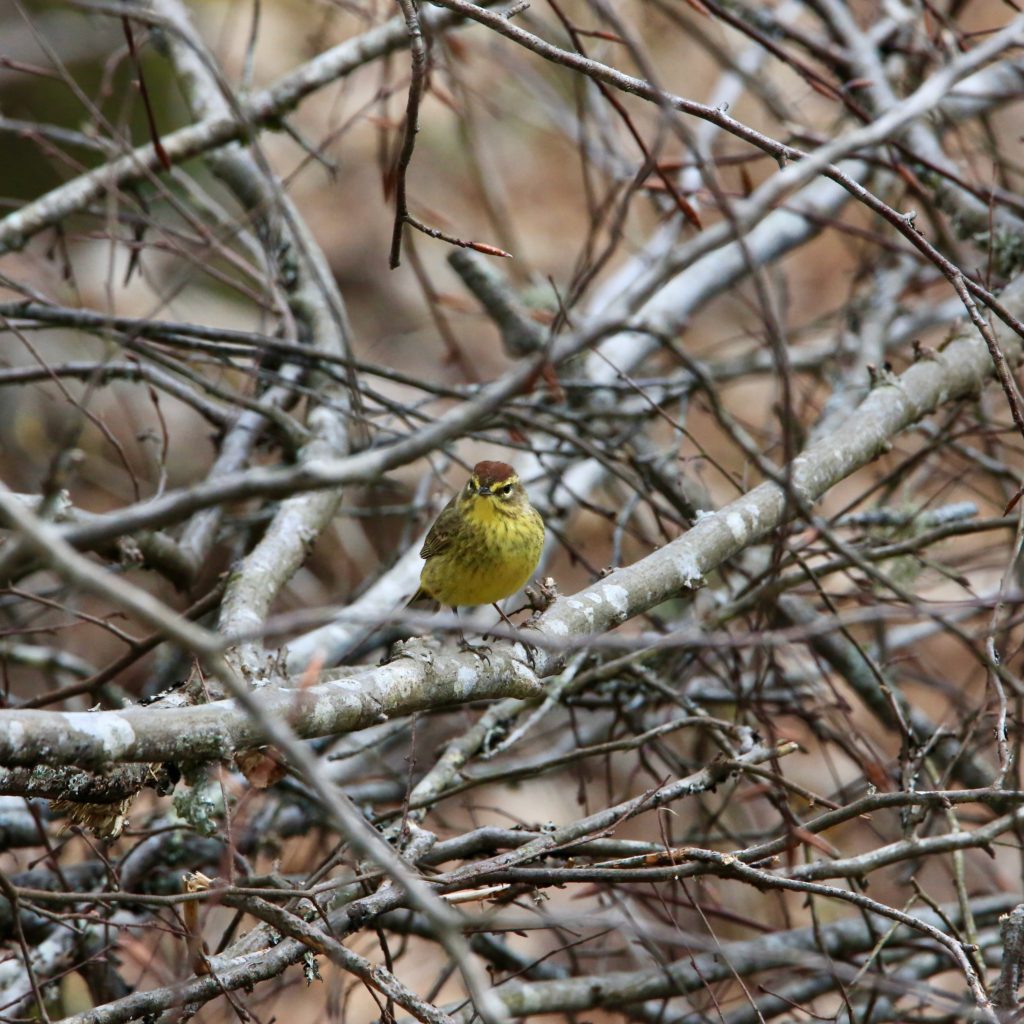
Another one of the warblers belonging to the New World Warblers’ concept, Palm Warblers are small songbirds. Palm warbler consists of two subspecies that have to be further named to distinguish them.
About Palm Warblers
There is the Yellow Palm Warbler who is also known as the Eastern Palm warbler. Then, the Brown Palm Warbler also has the reputation of being a Western Palm Warbler. The colors of these warblers change a little depending on the range they belong to. It is quite apparent from the name in itself.
Coniferous bogs are the favorite place for Palm Warblers to breed in, staying in the northeast side of the United States and all across Canada. Even in places like Iceland, they have been recorded as a vagrant.
Today, we will learn about this beautiful species of warblers, which will include:
- Palm Warbler color, anatomy, and identification
- Palm Warbler habitat, migration, and range
- Palm Warbler nesting, lifecycle, and song
Palm Warblers Color Pattern
As we have already discussed, due to their distinction in color and range, they have different names. Yellow Palm Warbler, the one on the eastern range, has brownish olive for the upper part of their body.
The underparts are much more yellow, a brighter shade no less. The breasts are rufous color, and the streaks flanked. Even the eyebrows are yellow-colored. The under-tails are yellow as well. All in all, they have a lovely combination of shades.
For the immature Palm Warblers, the under-tail and the belly area have a very dull yellow shade. The streaks on the breasts are faint.
The Brown Palm Warblers has grey and brown for its upperparts. The yellow reduces significantly in the lower area. Also, the streaks are much less colorful. The immature ones have whites in their belly. The eyebrows are also a pale shade.
Description And Identification
Well, you have to identify two kinds of Palm Warblers. There are Eastern ones and Western Ones. While the colors they share are the same for the most part, the yellow belly parts are more intense and brighter in Eastern Palm Warblers. Western Palm Warblers have a slightly duller shade of yellow. The upperparts are slightly cold grey.
The Palm Warbler’s colors are not the best option to focus on if you want to identify them. Instead, it is the tail that gives them away. The under-tails are yellow and do not stop wagging at all. It is by looking at them that you would know if you have come across a Palm Warbler or not.
Palm Warbler Song
The song of Palm Warblers is similar to that of a Chipping sparrow. Their music is slightly a buzz filled trill. This song consists of 4 to 16 notes. The pitch rises with each and has a buzzy quality to it. When they join the music-notes, it takes on a trill like sound.
The songs continue from 1 to 3 seconds at most. Then, about 12 to 18 seconds of silence is maintained before these songs start all over again. Often, males perch on treetops and shrubs to present the world with their song.
They have two kinds of calls- There is the loud one that sounds like a smack. There is the second one that sounds like a seep, thinly. During the flight, the thin seep sound comes out. They usually use the loud call when they want to warn somebody about something. It is primarily the alarm call.
Palm Warbler Size
As songbirds, Palm Warblers may be small, but as Warblers, they are considered on the larger side. Their belly certainly looks much more rounded and fuller. Unlike regular warblers, there is straightness and rightness to their posture.
They seem to resemble Pipit in their posture rather than warblers. It becomes especially apparent when they are on the ground. The tail and legs are also longer if you compare them to the other warblers. It undoubtedly contributes to the idea of them having a shape like Pipit.
In front of a Dark-Eyed Junco, they are smaller. Yet, a Ruby-crowned Kinglet will be larger than them. Lengthwise, they start somewhere from 12 cm to 14 cm, and the weight alternates between as low as 7 g to 13 g. The wingspan is somewhere from 20 to 21 cm.
Palm Warbler Behavior
Unlike most Warblers, you will see Palm Warblers walking all over the ground. Their tail keeps on bobbing even as they are walking. It does not matter whether they are sitting on a tree or the earth. They have quite the restless tail.
Though they are partial towards the ground, they also do the foraging and singing while resting on shrubs or tall trees. Sometimes, they can even evaluate a flycatcher, sallying out to grab an insect resting on the lower side of the tree or one that is on a shrub close to the ground.
No sooner than they arrive on the breeding ground, you will find the male Palm Warblers sitting on a high treetop and singing. They do so to establish their territory. These warblers chase out any intruding male the moment they enter the male Palm Warblers territory.
Then, from a high perch, a tune is held. Not long after the Palm Warblers have established their territory, you will see the Palm Warblers pairing up. This pairing typically happens from somewhere in late April to the middle point of May.
During the breeding season, the two birds stay together. Afterward, they split up. Usually, the pairs would stay together and maintain distance from other warblers. However, they do not mind joining mixed flocks of different species of birds.
What Palm Warbler Eat
Primarily, Palm Warblers survive on insects alone. Caterpillars, flies, beetles, you name it. Come winter, and they seem to take a liking towards seeds, berries, grapes, etc. Usually, they find insects by hunting the grounds or among the shrubs. Sometimes though, they might catch one while on mid-air.
Where Palm Warbler Live And Habitat
For breeding, one can find Palm Warblers in bogs and areas where evergreen trees are scattered generously. Boreal forests where the ground is thick also seems to be well-liked by them. During the migration period, fence rows, weedy fields, and forest edges are the places one can mostly find them.
Usually, open areas where trees and shrubs are scattered are full of them. On the wintering grounds, these areas continue to remain similar. Marshes, parks, prairies- all of these are places most likely to be inhabited by Palm Warblers.
Range and Migration
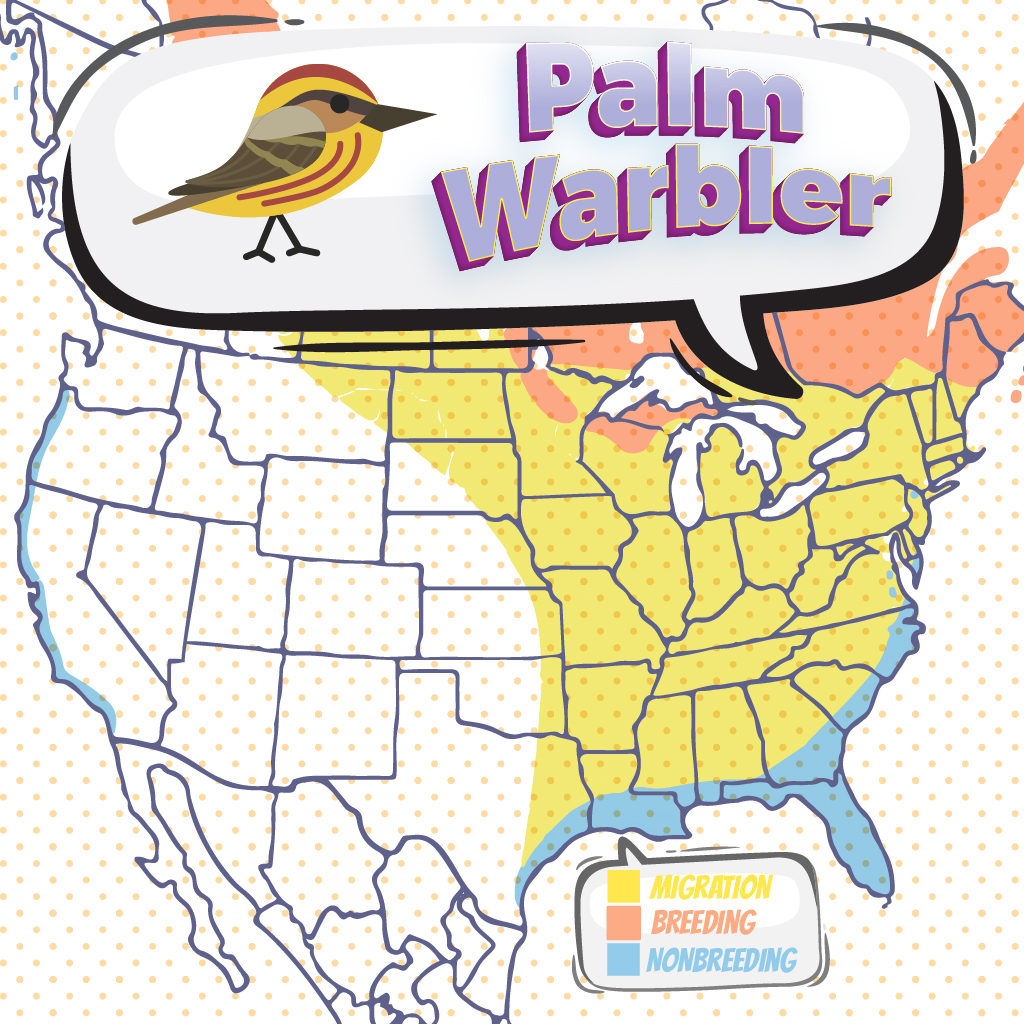
On the eastern edge of the Continental divide, all over Canada and northeast areas of the United States, Palm Warblers prefer coniferous bogs to breed on. During the migration period, they travel to the southeast side of the US, the Caribbean islands, the Yucatan Peninsula.
Then, in winter, they travel from south of east Nicaragua to Panama. Among the warblers, they are amongst those who return to their breeding ground quite early during spring. Their migration is complete before the two month period is even up some times.
The winter range for Palm Warbles includes most of North America’s Atlantic coast, even extending to the south side of Nova Scotia. Since 1900, people have often seen the Palm Warblers in Massachusetts during the Christmas bird count. In Iceland, they are recorded as Vagrants.
Palm Warbler Lifecycle
They lay broods in a count of 4 to 5 eggs. Like the eggs of most warblers, Palm Warblers also produce eggs that are creamy white. It is only at the edge of the eggs that you might notice shades of brown.
Only in the case of incubation, there seems to be a divergence from the usual Palm Warbler habits. Instead of the female Palm Warbler doing the incubating, both the parents participate. This period lasts for about 12 days.
Rarely do they become victim to cowbird eggs. They protect themselves against parasitic ways by covering the cowbird eggs. They make an extra layer on the nest bottom for this.
Once the eggs hatch, both parents partake in feeding their young ones. After about 12 days, the young ones are ready to leave the nest.
After fledging, it takes about 1 to 2 days before they are even ready for flying. In a year, these warblers lay about two broods.
Nesting
For breeding and nesting, it is known that Palm Warblers do not always have only one partner. For some males, they might have more than one. They are early nesters. Especially the male Palm Warbler arrives on the breeding ground quite early. They do it during the start of April, and by May, they have already started building their nests.
They usually place the nest itself close to spruce trees, the stunted ones. The nests are close to the trunk, either on the ground or somewhere on the shrubs. They make open cup nests.
These nests often stay hidden under grass clumps. They keep the nests on hammocks made from moss. It is usually the female Palm Warbler who makes the nest. They use feathers to line it up. The nest itself consists of fine and dry grass, bark shreds, and hairs.
Anatomy of a Palm Warbler
The anatomy of a Palm Warbler is quite impressive, and there is no doubt about it. For one, among the warblers species, their posture is considered quite attractive. They stay upright instead of bending down like most warblers seem to.
They also have very long tails. This long tail is continuously bobbing up and down. A quality that has often enabled people to identify Palm Warbler immediately.
Their posture is so perfect that it becomes abundantly clear when they are walking on the ground. While the Palm Warblers are on trees, they do not appear that upright. However, there is most definitely a stiffness to the way they hold themselves.
Just like their tail, they also have unusually long legs. Despite having long legs, the legs are as thin as they could get. Their eyes are relatively large compared to their face and completely black. Their belly is larger than most warblers and more rounded.
The wings, though not excessively long, are quite good and similar sized to other warblers. There is a definite distinction between their neck and head, though it is not much to completely separate the two body parts.
The head itself is pretty small and almost flat. Of course, we can not forget about the bill while talking about the anatomy of a Palm Warbler. They have thin but long bills.
Final Thoughts
You will be happy to know that the recorded number of Palm Warblers suggests they are in no danger of disappearing any time soon. Their habitat does not seem to be under any kind of threat, whether it is wintering ground or breeding ground.
They spend their wintering time in open places or places that have been disturbed by humanity. In some ways, that makes the chances bigger of coming across them.
Preferring open areas, Palm Warbler tend to stay close to the ground or on the earth. The brightness of their color might deem depending on the range they are from. But the constant bob of their tails remains the same. This feature of this tail should be able to help you know when you have come across one.
You have the highest chance of seeing Palm Warblers in Florida. In these places, people can even see them near Palm groves. Yet, they never seem to sit on the Palm trees themselves.
If you want to see Palm Warblers, you better have your camera and binoculars ready. They are usually on the ground, but sometimes, they might perch very high on trees. That’s when you need those magnifying lenses. For the cameras, well, who would not want to take some pictures and videos of this tail-wagging species of birds.
Ornithology
Bird Watching Academy & Camp Subscription Boxes
At the Bird Watching Academy & Camp we help kids, youth, and adults get excited and involved in bird watching. We have several monthly subscription boxes that you can subscribe to. Our monthly subscription boxes help kids, youth, and adults learn about birds, bird watching, and bird conservation.
Bird Watching Binoculars for Identifying Palm Warblers
The most common types of bird watching binoculars for viewing Palm Warblers are 8×21 binoculars and 10×42 binoculars. Bird Watching Academy & Camp sells really nice 8×21 binoculars and 10×42 binoculars. You can view and purchase them here.
Palm Warbler Iron On Patches
Kids, Youth, and Adults love to collect our Bird Watching Academy & Camp iron on patches. Our bird watching patches help you keep track of the birds you have seen an identified. You can also display the patches on our Bird Watching Academy & Camp banners.
The Palm Warbler is a great iron-on patch to start your collection with. The patches are durable and can be sewn on or ironed on to just about anything.
- Palm Warbler Iron on Patch$2.99
- Bird Banner$10.99
Palm Warbler Stickers
Stickers are a great way for you to display your love for bird watching and the Palm Warbler. We sell a monthly subscription sticker pack. The sticker packs have 12 bird stickers. These sticker packs will help your kids learn new birds every month.
Bird Feeders For Palm Warbler
There are many types of bird feeders. Here are our favorite bird feeders for your backyard. We use all of these bird feeders currently. Kids will have a great time watching birds eat at these bird feeders. Using this collection of bird feeders will provide a wide variety and many types of birds.
Best Bird Houses for Palm Warbler
There are many types of bird houses. Building a bird house is always fun but can be frustrating. These 4 bird houses have become our favorites. Getting a bird house for kids to watch birds grow is always fun. We spent a little extra money on these bird houses but they have been worth the higher price and look great.


